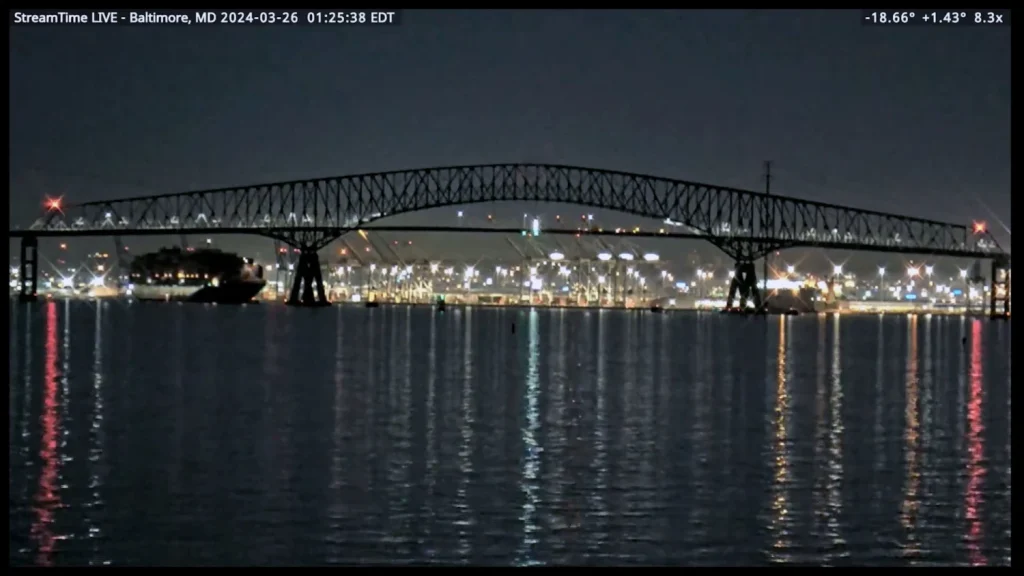The Francis Scott Key Bridge in Baltimore partially fell into the Patapsco River early Tuesday when a cargo collided with it. When the steel-arched bridge was completed in the 1970s, it was regarded as an engineering marvel.
Here’s what you should know about the 47-year-old bridge, including its history and significance.
Where is the Francis Scott Key Bridge?
The 1.6-mile-long bridge spans the Patapsco River as it runs from Baltimore’s Inner Harbor out to the Chesapeake Bay.
The bridge served as a key part of Interstate 695, carrying north-south traffic around the city of Baltimore. The structure carried four lanes of traffic, two in each direction, separated by a concrete divider.
According to the Maryland Transportation Authority (MDTA), the bridge served as part of a network of crossings that offered “convenient” transportation for local and interstate traffic.
Baltimore’s Key Bridge is one of two in the D.C. metro area named after Francis Scott Key, the author of “The Star-Spangled Banner.” The other crosses the Potomac River and links Washington’s Georgetown to Rosslyn in Arlington, Va.
When was the Francis Scott Key Bridge built?
Baltimore’s Francis Scott Key Bridge began construction in 1972 and opened on March 23, 1977.
The bridge was constructed after the Baltimore Harbor Tunnel reached its traffic capacity and cost more than $60 million, according to the MDTA.
The construction of the four-lane bridge was considered “a major milestone in Maryland’s transportation planning,” according to Preservation Maryland, a nonprofit dedicated to protecting historical sites. The bridge was hailed as“a significant engineering accomplishment,” the organization said.
It was also one of the longest continuous-truss bridges in the United States, according to the American Society of Civil Engineers.
Toll revenue on the bridge exceeded $56 million in 2023, according to the MDTA.
What is the historical significance of the bridge?
According to the MDTA, Key is believed to have witnessed British ships bombarding Fort McHenry near what became the site of the bridge in September 1814, during the Battle of Baltimore.
That event inspired him to write the lyrics of the poem “Defense of Fort McHenry,” which was later renamed “The Star-Spangled Banner,” according to the Maryland Center for History and Culture.
The poem officially became the national anthem in 1931.

